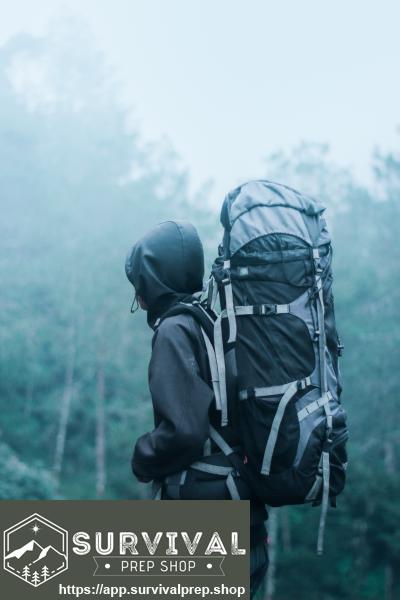Welcome, friends.
I'm TK, and I'm excited to share my perspectives on today's vital survival strategies.
Just a reminder, these ideas represent my personal experiences on this path of readiness.
How heavy should your bug out bag really be?!
One important thing to know before you bug out is how much your bug out bag should weigh. Most people lean toward the “more is better” type of thinking when it comes to supplies, but in this case it could mean you get slowed down and put in danger.
A bug out bag that’s loaded to the hilt with everything but the kitchen sink will get you killed. The heavier it is, the more strain it puts on your body and it will slow you down as you’re walking or running to safety.
Not only that, but if a bag is too heavy, it will act as a gravitational pull that could cause you to fall backward. There are different mindsets when it comes to the right weight. Some people say a ballpark estimate is less than 50 pounds – while others think along a much lighter amount of about 15.
The truth is that your bag should be packed with survival necessities and should weigh around ten percent of your body weight. While that might seem like an impossible goal, you have to remember that a bug out bag isn’t a catch all solution.
It’s intended purpose is to help you survive for 72 hours – not weeks or months – but some people pack it intending it to last for weeks or months. If you fill it up like that, you’re going to end up with a bag that’s too heavy for you to safely bug out with.
If your bag is too heavy, not only is it going to prevent you from bugging out with speed, but it can wear you out and even end up causing shoulder or bag strain, which could impact your safety in an ambush or animal attack.
Your bag should only be loaded with 3 liters of water and purification methods for obtaining water after that, if needed. You’ll need 3 days’ worth of food. Though it can be tempting to pack more, that would be a mistake and weigh your pack down.
You need to follow the same 3 day rule when it comes to clothing. Carry a means of shelter with you if you don’t have the survival skills to build something in the woods. Take a first aid kit, flashlights, fire starter method, and a camping pot.
Carry any knives you brought along in the bag, but keep your gun on you so that you can get to it quicker. Some preppers think of packing a bug out bag the same way that they pack groceries.
They put whatever is bulkiest and heavier on the bottom of the bag then load the lighter stuff on top. This is backward for a bug out bag. You want the bulk of the weight at your shoulders to avoid strain on your lower back.
You’ll want any shelter items like a tent or a tarp on the bottom – because these items fill out the bottom of the bag and help support other items that you pack on top of them. When packing a bag with outside pockets or Molle straps, make sure that you have items of equal or close weight on either side so that you don’t end up with an off balance weight.
As we come to the end of our journey today, I hope my words have offered you some valuable insights.
Your company on this path is always appreciated.
Thank you for reading, and keep staying prepared.
Thanks again.
TK – Survival Prep Shop
Recommended Books
Free eBook
Check out our FREE ebook Why Survivalist Planning Is Right for Everyone!

